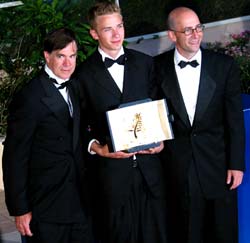Over at Modern Art Notes, Tyler’s on a roll, posting frequently and furiously about the current court proceedings to decide the fate of The Barnes Collection, the greatest assemblage of modern art in the country. Tyler does his gadfly best, providing some very useful context (and a bit of foaming at the mouth) for this big, somewhat under-/mis-reported story.
Barnes was a new moneyed crank with a voracious appetite for once-unpopular art (Cezanne, Matisse, Renoir, Soutine, etc.), which he frequently bought in bulk, out of the artists’ studios. He had an unparalleled–but not unbiased–eye; by cornering the market on cheesy Renoir nudes, for example, he forced generations of Third World dictators to decorate their palaces with much less desirable, generic soft porn. His collection, foundation, and vision were all mercilessly mocked by Philadelphia society the art establishment of his day, and he took great glee in their eventual comeuppance; he knew the world would have to come groveling back to his art someday.
Now, though, after a couple of generations of pathetic mismanagement (“hundreds of items,” including a Matisse and a Renoir gone missing. Did you check the bathroom for the Renoir, your honor?); a feckless board; the inept defensiveness of Lincoln University (the historically black institution Barnes’s will put in charge of his legacy), and an utterly clueless-sounding judge, it looks like that same Philadelphia Establishment’s shameless attempt to take control of the collection may succeed. It’s all pretty ghetto.
I haven’t thought it all the way through yet, but Barnes comes to mind when I see the sometimes clumsy, always entertaining, mega-collecting arms race in Miami right now. I doubt that Marty Margulies or his competitors are the Albert Barnes of the 22nd century, but I know that there are enough snotty art worlders who try to proclaim their own insiderness by mocking them behind their backs.











